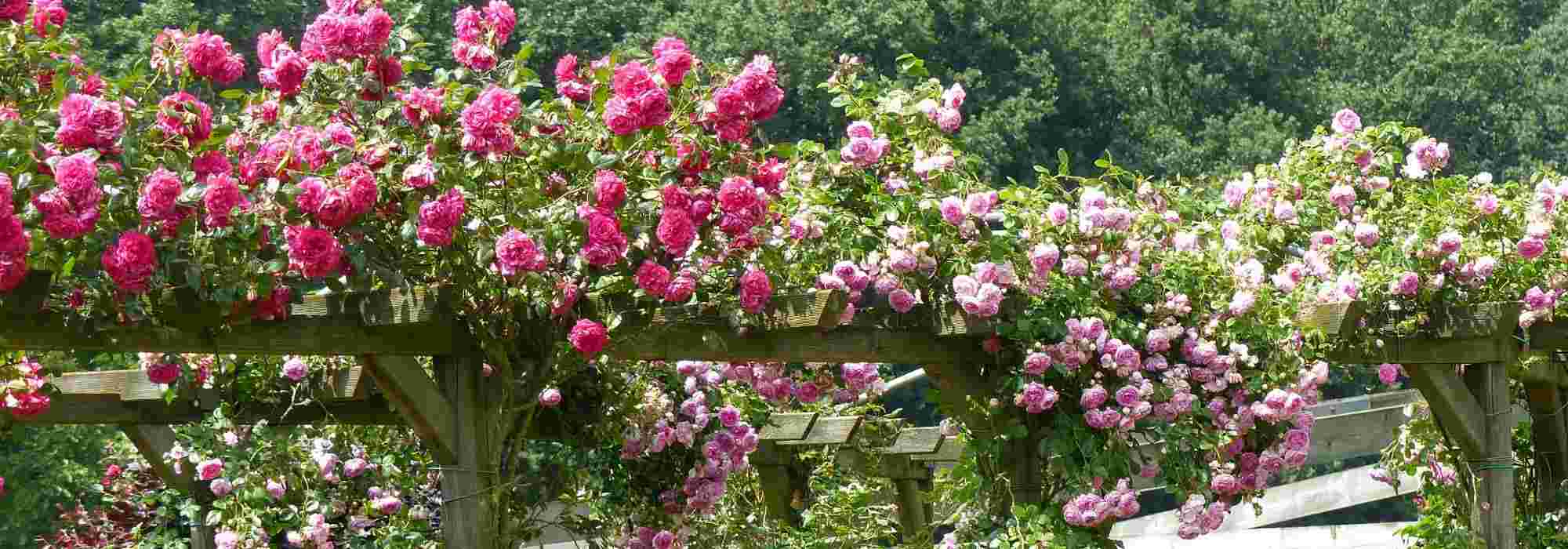
When to prune a climbing rose and how to do it properly?
Best practices
Summary
Pruning climbing roses is essential to ensure vigour, abundant flowering and longevity. These roses, whether perpetual or not, develop long floriferous stems capable of elegantly covering a wall, pergola, arch, pillar or even a tree. They can reach 3.5 to 4 metres in height. To maintain a balanced silhouette, good health and ensure they remain floriferous year after year, pruning climbing roses is required annually.
Discover our advice on when and how to prune a climbing rose!
Good to know: some variety names are followed by the term “climbing”, a simple translation of “grimpant” into English.
When to prune a climbing rose?
Climbing roses are pruned at specific times, depending on whether they are able to flower again during the year or not :
- perpetual climbing roses : flowers form on shoots that developed during the year. Pruning of perpetual climbing roses is therefore carried out in late winter, at the onset of new growth — between February and April depending on region. It is also possible to carry out a light pruning in autumn to lighten the work in spring.
- non-perpetual climbing roses : they bear flowers on branches that are two years old. So if you prune them in late winter, you remove the shoots formed the previous year and ready to flower. Pruning is therefore done just after flowering, that is in July or August, unless you want to enjoy the pretty hips
For more information on pruning times for roses, please consult our advice sheet: “When to prune roses” ?
Good to know : pruning of climbing roses applies only to well-established plants at least three years old.
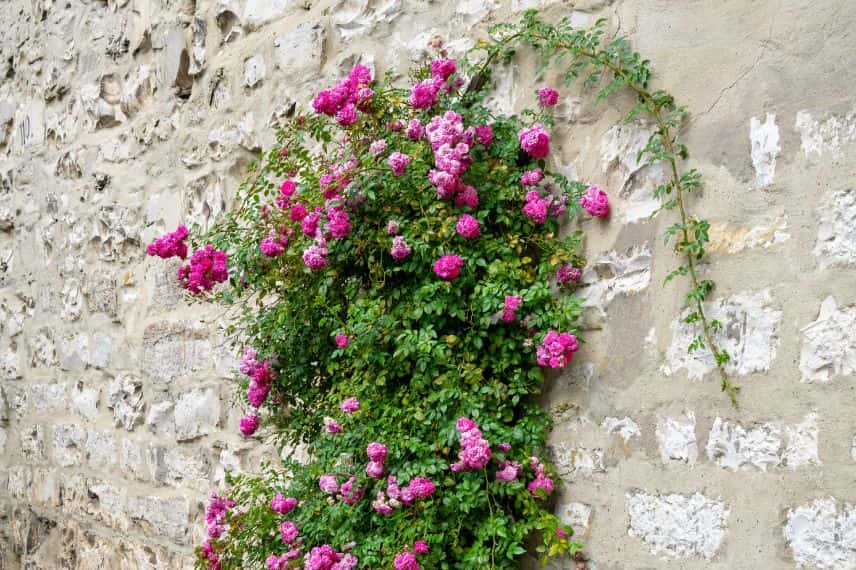
A climbing rose against a wall
You may also read
Climbing rose or liana rose: what's the difference?How to prune a perpetual climbing rose?
Perpetual climbing rose flowers on current-season shoots as well as on older branches throughout the season.
Here are our instructions to prune your rose:
- start by putting on thick gloves that cover the forearms;
- remove dead branches, old wood;
- untie then cut branches aged 3 years or more to stimulate formation of new floriferous shoots from the base. Cut in roughly 30-centimetre sections each time, from the tip towards the base of the branch to make it easier. Do not hesitate to use loppers to remove these branches as low as possible because the wood is hard and very difficult to sever with a simple pruning shear;
- aim to keep between 3 and 6 vigorous, healthy main canes;
- train the younger main canes retained and shorten all secondary shoots to leave only 3 to 15 cm. Cut on a slant, 0.5 cm just above a well-positioned bud. This technique is called arista pruning;
- on a wall or fence, arch the main canes out in a fan and make them as horizontal as possible along wires or on a trellis, for example. This helps distribute the sap evenly between the shoots. On an obelisk, wind the stems all the way round from the base of the rose. Training climbing roses is easier when the stems are young and flexible.
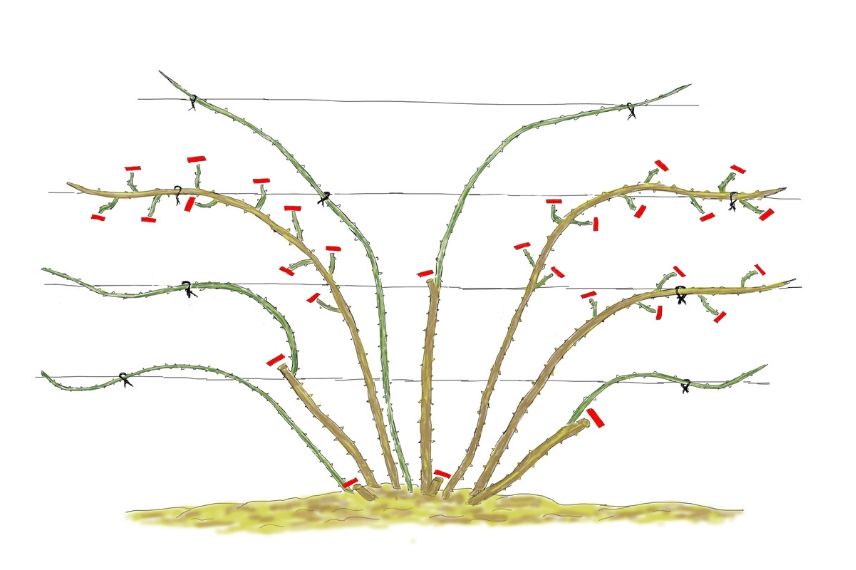
Pruning a climbing rose
Some examples of perpetual climbing roses: ‘Ghislaine de Féligonde’, ‘Phillis Bide’, ‘Clair Matin’, ‘Pierre de Ronsard’, ‘Guirlande d’Amour’, ‘Jasmina’, ‘Madame Alfred Carrière’, etc.
→ Also find Olivier’s tips in this video on pruning perpetual climbing roses:
Discover other Climbing Roses
View All →Available in 2 sizes
Available in 1 sizes
Available in 4 sizes
Available in 2 sizes
Available in 3 sizes
Available in 2 sizes
Available in 3 sizes
Available in 2 sizes
Available in 2 sizes
Available in 2 sizes
How to prune a non-perpetual (once-flowering) climbing roseBrief principle- Non-perpetual climbers flower on previous season’s wood, so main pruning is done straight after flowering to avoid cutting away next year’s blooms.When to prune- Prune as soon as flowering finishes (late spring or early summer depending on variety and site).Tools- Sharp secateurs, loppers for thicker wood, gloves, ladder, soft ties, disinfectant for tools.Step-by-step pruning1. Remove dead, diseased or damaged wood- Cut back to healthy green wood or to the base. Make clean cuts at a 45° angle just above a bud or side shoot.2. Thin congested growth- Remove crossing, rubbing or inward-growing canes to improve air circulation and light. Keep 4–8 vigorous main canes as a framework.3. Manage weak shoots- Remove very thin, weak shoots (pencil thickness) as they rarely give good flowers.4. Shorten flowering laterals lightly- Cut back long side shoots only lightly (one-third to one-half) to tidy shape and encourage new flowering shoots next season. Avoid heavy shortening of main framework canes.5. Train and tie in shoots- Tie long flexible new shoots horizontally along supports to encourage more lateral flowering spurs. Use soft ties and avoid strangling the stem.6. Rejuvenation (if needed)- For very old or overgrown plants, remove one or two of the oldest main canes to near ground level immediately after flowering to encourage vigorous new canes. Do this progressively over a few seasons to avoid losing all flowers at once.Aftercare- Clean up and remove prunings to reduce disease risk. Feed and mulch after pruning to support new growth. Do not carry out hard pruning in autumn — prune early summer instead.Notes- For grafted plants, remove any suckers from below graft union by cutting to base. - Disinfect tools between cuts if canker or other diseases are present. - Unlike perpetual climbers, non-perpetual types need minimal winter pruning — only light tidy if absolutely necessary.
Non-perpetual roses are roses that flower abundantly in June/July. Flowering typically lasts between 3 and 4 weeks.
Here is how to prune non-perpetual climbing roses :
- remove dead wood and old branches as low as possible to encourage emergence of new shoots ;
- simply shorten branching and also use the opportunity to rebalance silhouette of rosebush if needed ;
- check attachment points of rosebush on support and train new shoots to support as they develop, without tightening ties too much.
Some examples of non-perpetual climbing roses: ‘May Queen’, ‘Alchymist’, ‘Aimée Vibert’…
Finally, if you want to enjoy rose hips, I recommend simply removing the oldest branches and postponing pruning of your climbing rose until later, at end of winter. You can just shorten stems that have already flowered and renew framework of the rosebush. But above all, do not touch the fine shoots from previous year. They are the ones that will flower in June!
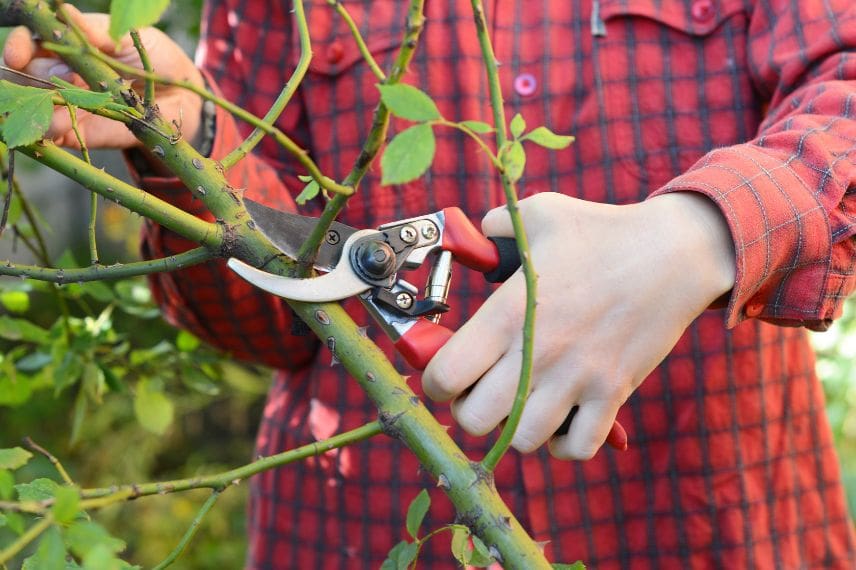
Pruning a non-perpetual rosebush with a pruning shear
You may also read
Climbing roses: the 10 best varietiesAfter pruning: caring for and training climbing roses
After pruning, there are a few measures you can take to care for your climbing rose :
-
Remove weeds and aerate soil at the base of the rose, by removing undesirable herbs and lightly forking the surface to improve aeration and water infiltration.
-
Add an organic amendment such as ripe compost or well-rotted manure to strengthen soil fertility before growth resumes.
-
Lay a natural mulch (chipped branches, bark, wood chips, dead leaves, etc.) to retain moisture, slow growth of undesirable herbs and protect superficial roots from temperature fluctuations (heat as well as frost).
-
Check ties on the support, ensuring they are flexible, non-damaging and spaced sufficiently to allow development of young shoots without constraint.
-
Train the climbing rose by tying young flexible stems horizontally or in a fan, which encourages flower buds to form along their entire length, unlike a vertical shoot which produces few flowers.
-
Apply a preventative treatment, in case of mild winters or humid climate, with Bordeaux mixture or a natural fungicidal treatment to limit risks of powdery mildew, rust or black spot.
- Subscribe!
- Contents

































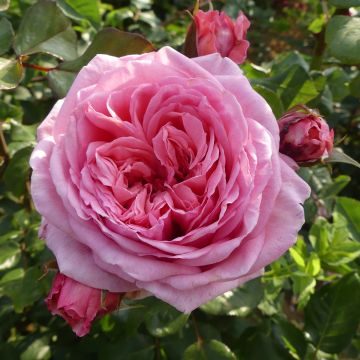
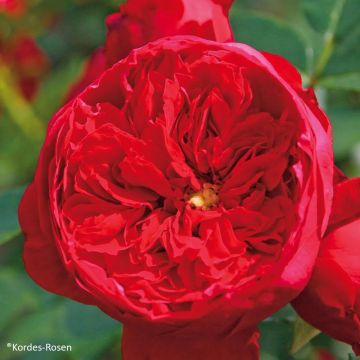
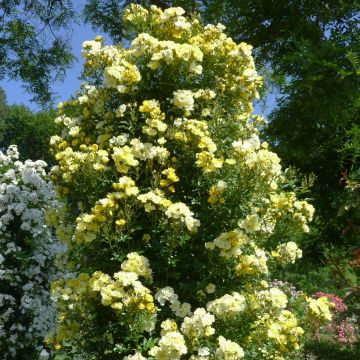
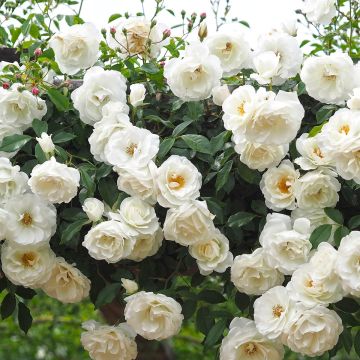
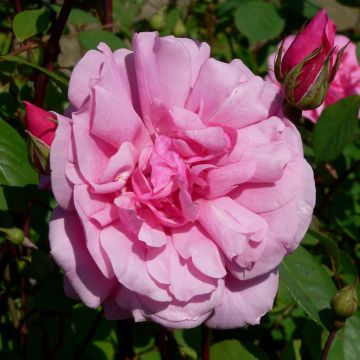
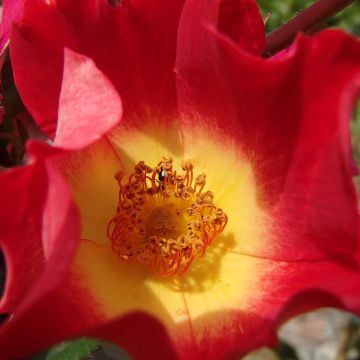
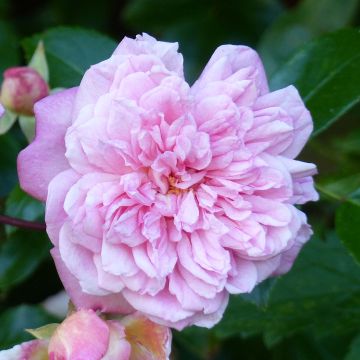
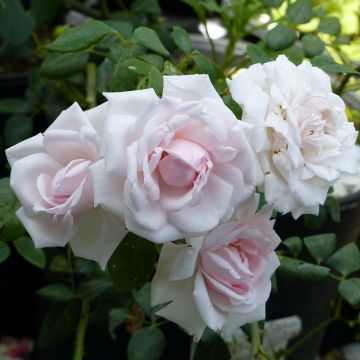
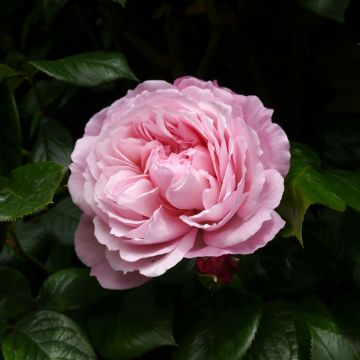
Feedbacks